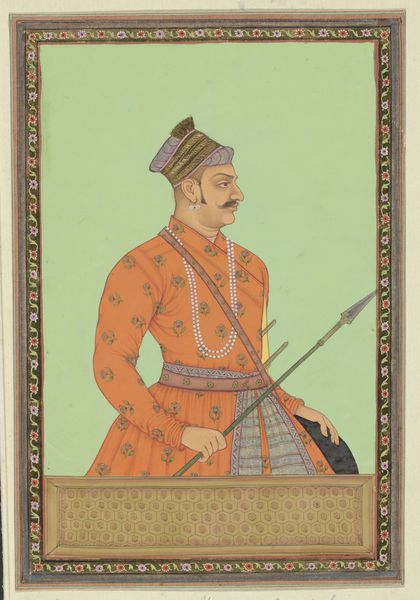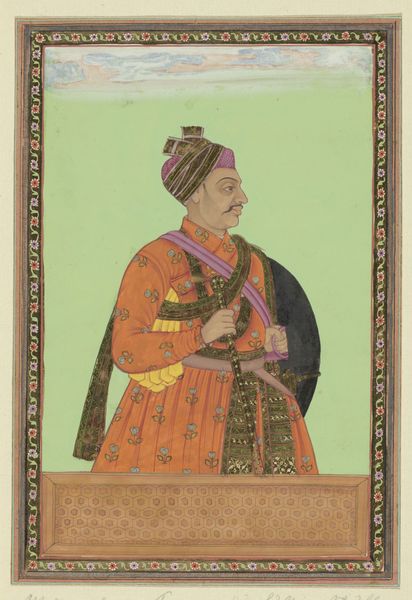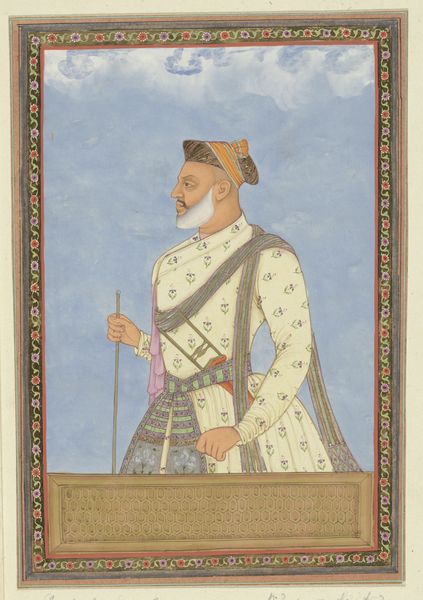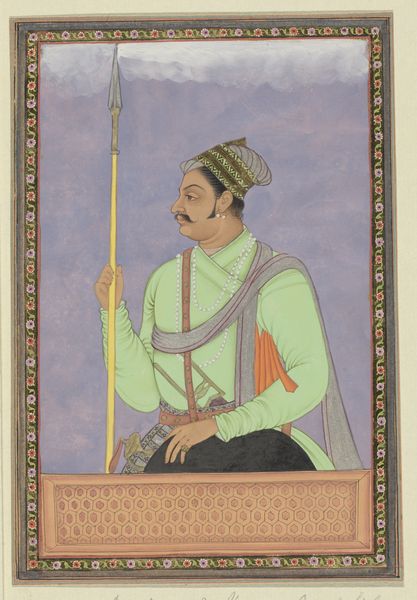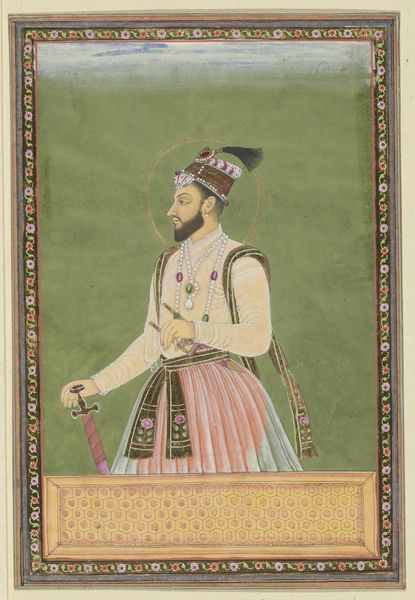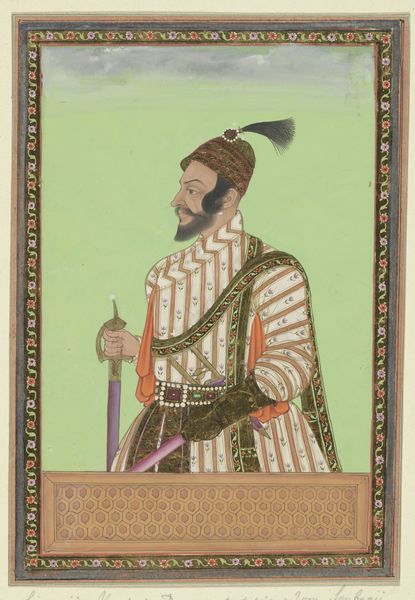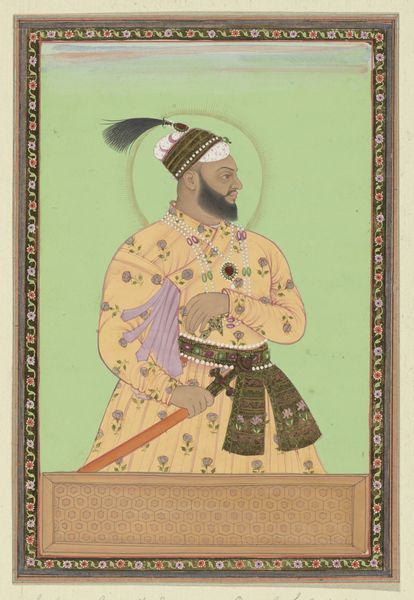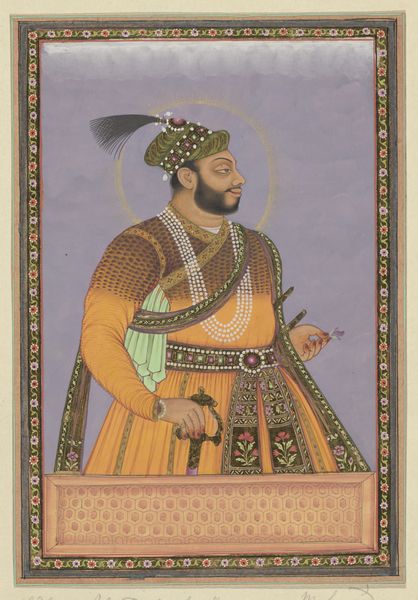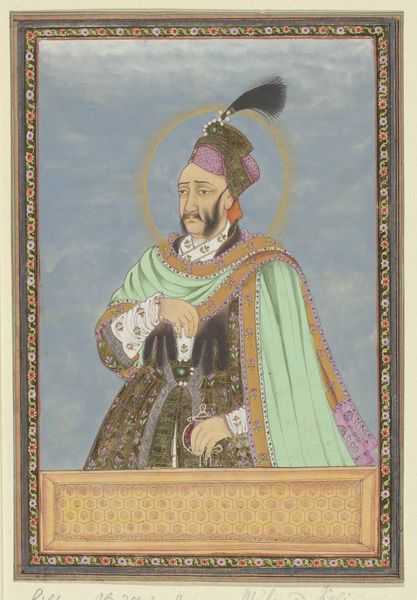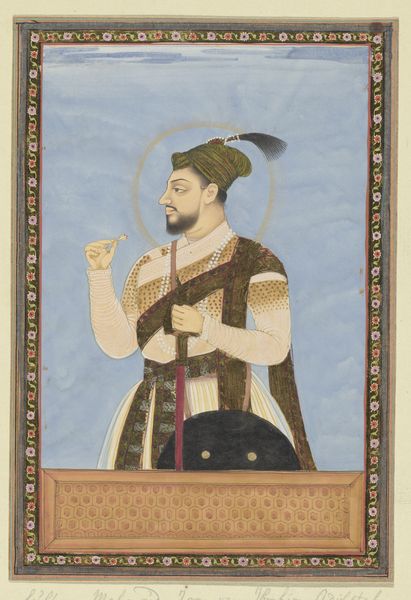
Dimensions: 16 x 12 in. (40.6 x 30.5 cm)
Copyright: Public Domain
Curator: Here we have a painting titled "Maharaja Sardar Singh of Bikaner," dating from between 1850 and 1880. The medium is oil paint. Editor: Immediately, what strikes me is the highly controlled color palette—the way the artist limits the shades, focusing primarily on that orange robe, contrasted against the deep black backdrop. There’s a remarkable flatness, yet an undeniable sense of presence. Curator: Indeed. Look closely at the regalia, and you'll see it's more than ornamentation; it's a deliberate projection of power. The turban, the jewels, even the peculiar fan attached to the headdress all speak volumes. The necklaces, for example, are not merely decorative but probably also markers of lineage and specific honors conferred upon him. Editor: And the orb he holds? A sphere of absolute blackness punctuated by…are those small jewels arranged in geometric patterns? Curator: Precisely! Objects of this nature can symbolize worldly authority. In many Eastern traditions, holding a sphere connects the ruler to a cosmos both knowable and mysterious. He’s claiming a place within a symbolic structure that stretches beyond immediate governance. Also note the peculiar lack of pupils. Editor: Ah, yes! An interesting stylistic choice. Almost unnerving in its effect. By eliminating that key element of the human gaze, does the painter remove something essential, replacing it with… Curator: Perhaps not "replacing," but certainly "transcending." His look evades you as a viewer because it belongs on a different plane, that of legend. By not directly addressing the viewer, his gaze solidifies his sovereignty, almost godlike power. Editor: It seems as if the meticulous application of paint and detail works to emphasize an idealised status, the image functioning less as portrait and more as constructed sign. But in that case, what's communicated through that tension between tangible and representation? Curator: The Maharaja becomes both human and symbolic at once, occupying a sacred space beyond the realm of our perception. The piece becomes a timeless statement about rulers of the world and an introspective comment of humanity through symbolic, representative forms. Editor: It’s funny how a two-dimensional painting of a king with an intense stare can draw out those questions from us as viewers. It really comes to life beyond the formal art-historical details.
Comments
No comments
Be the first to comment and join the conversation on the ultimate creative platform.
